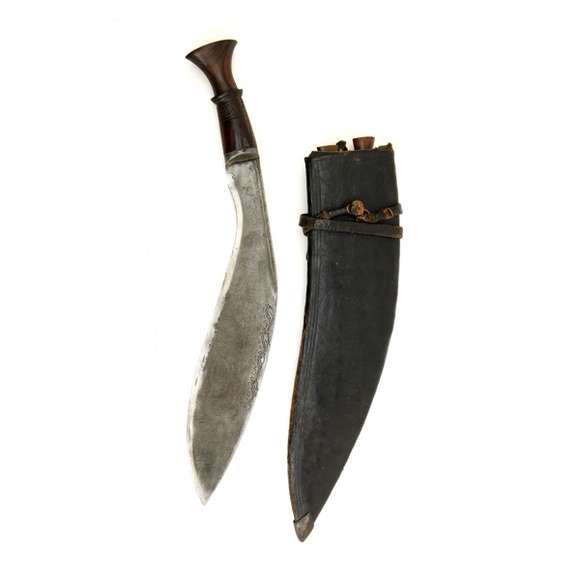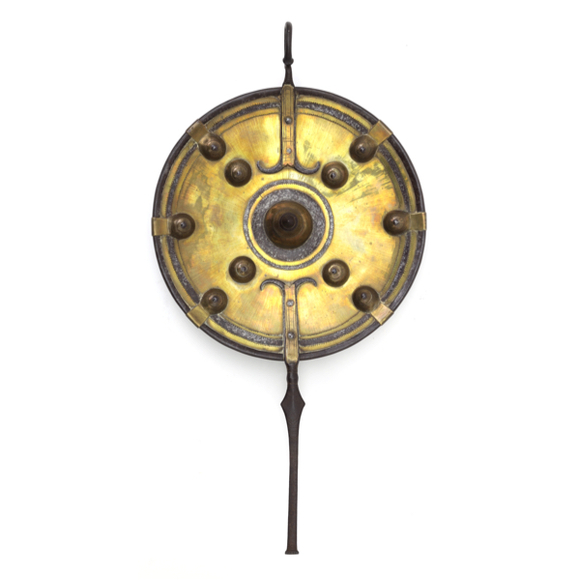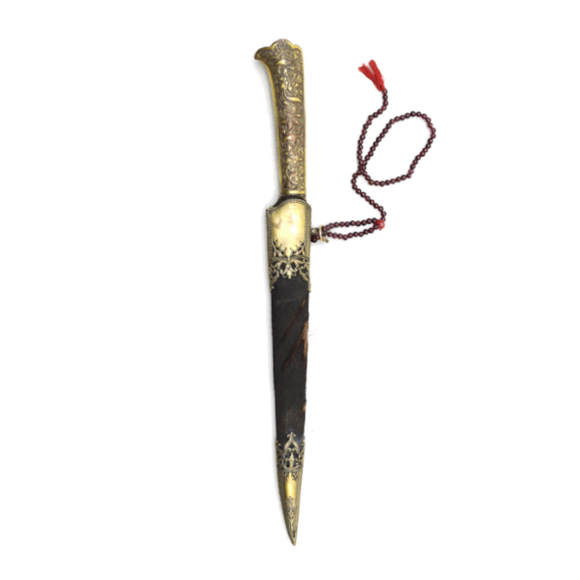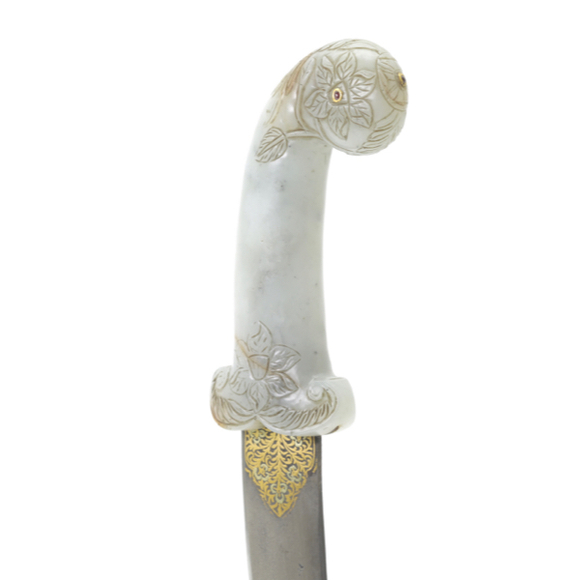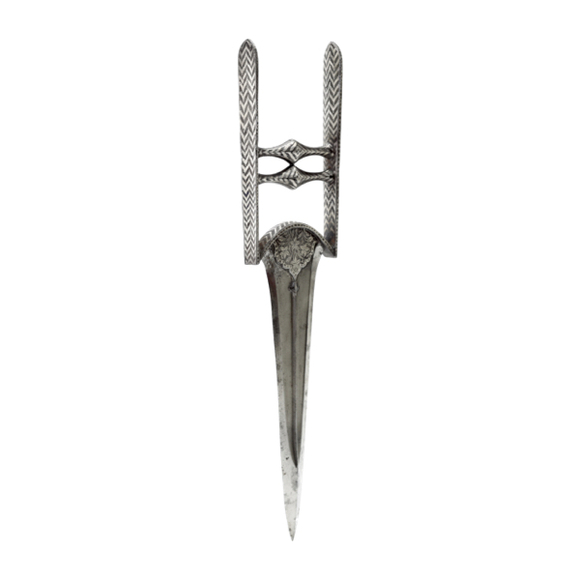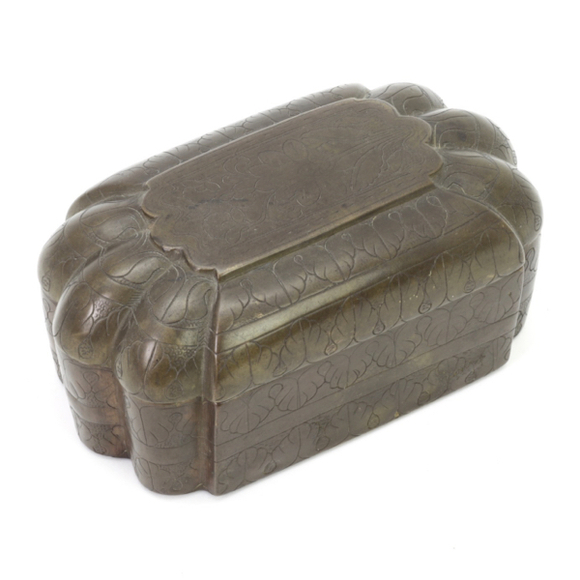Signed: Ricky Milnes, India 44, Burma 44, Ramree 45.
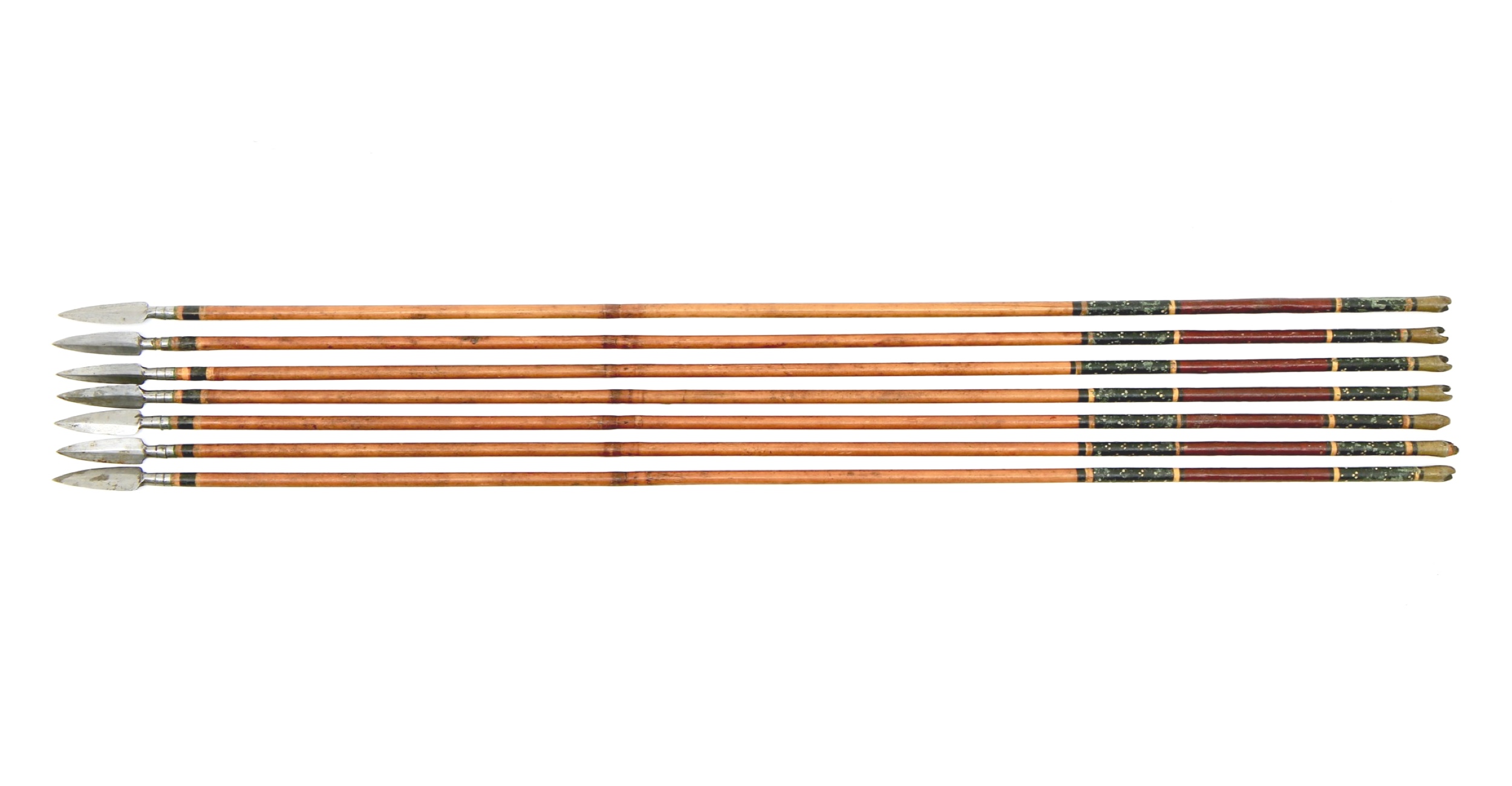
Total 73.2 cm
Effective 68 cm
(Inside nock to base head)
Length 48 mm
Width 15 mm
Average 27 grams
25 - 32 grams each
Central India
Steel, brass, reed, lacquer, pigments, wood, sinew
18th - 19th century
Introduction
In collections of (Asian) arms and armor, arrows are often not very well represented or sometimes even completely absent. This while for most warriors, especially throughout Asia, the bow has long been a primary weapon and the sword often just a backup like the modern soldier would carry a bayonet.
Antique arrows, especially those of established states or empires, are often rather sophisticated in design and well finished. There was a lot of variation in head designs, all with their own specific purposes.
This set
A set consisting of seven Indian broadhead arrows. The heads are shaped like tiny spearheads, with a facetted cross-section. At the base of the head are a series of alternating steel and brass washers, and a long tang continues into the shaft.
They are mounted on reed shafts of an unknown species. The tails of the arrows are painted in alternating colors black, yellow, dark green with white dotted decoration and a dark cherry red.
The arrows have the bulbous nocks so typical of Indian work.
Dating/attribution
The style of the washers behind the head and manner of decorating the shafts does not seem like typical northern work. Especially the base of the heads are reminiscent of a group of arrows attributed to Odisha, west India.1
Conclusion
A nice grouping of Indian broadhead arrows, of decent quality and in a nice condition.
Notes
1. Roy Elvis; The Hindu Warrior. Self-published, 2020. Page 417.


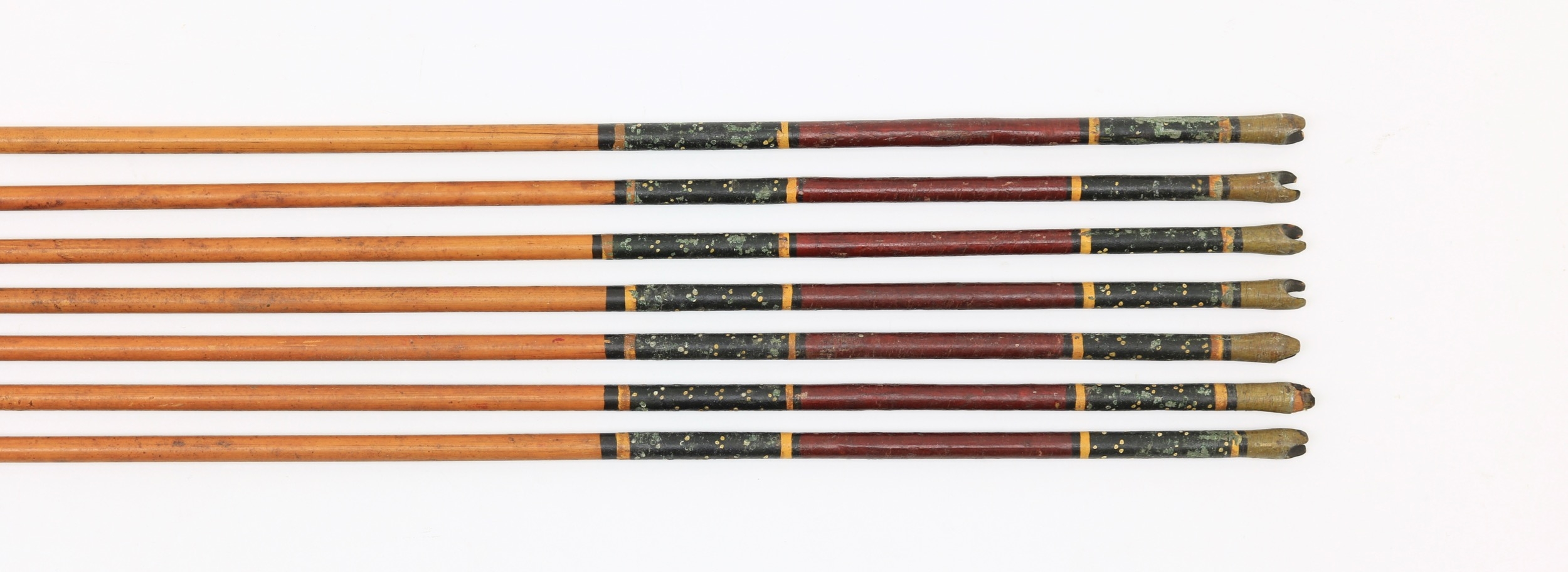

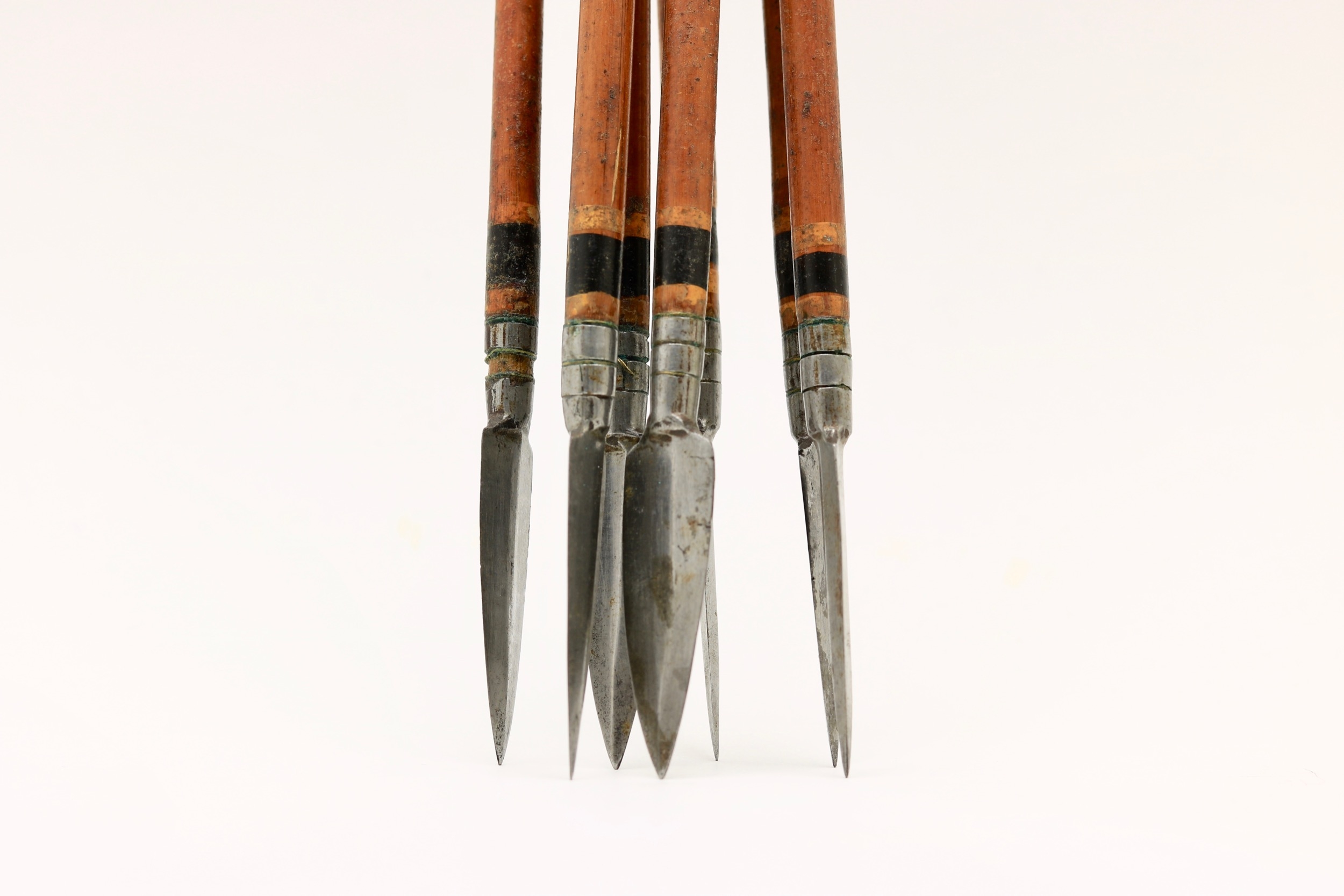


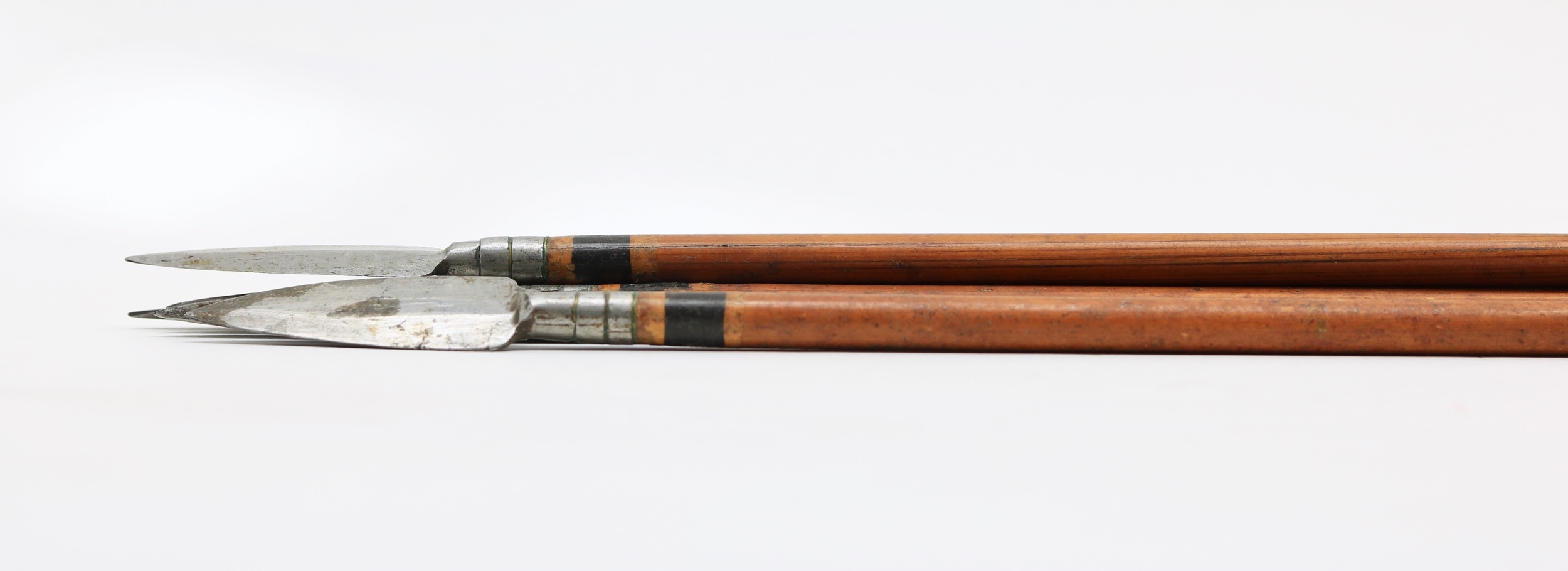
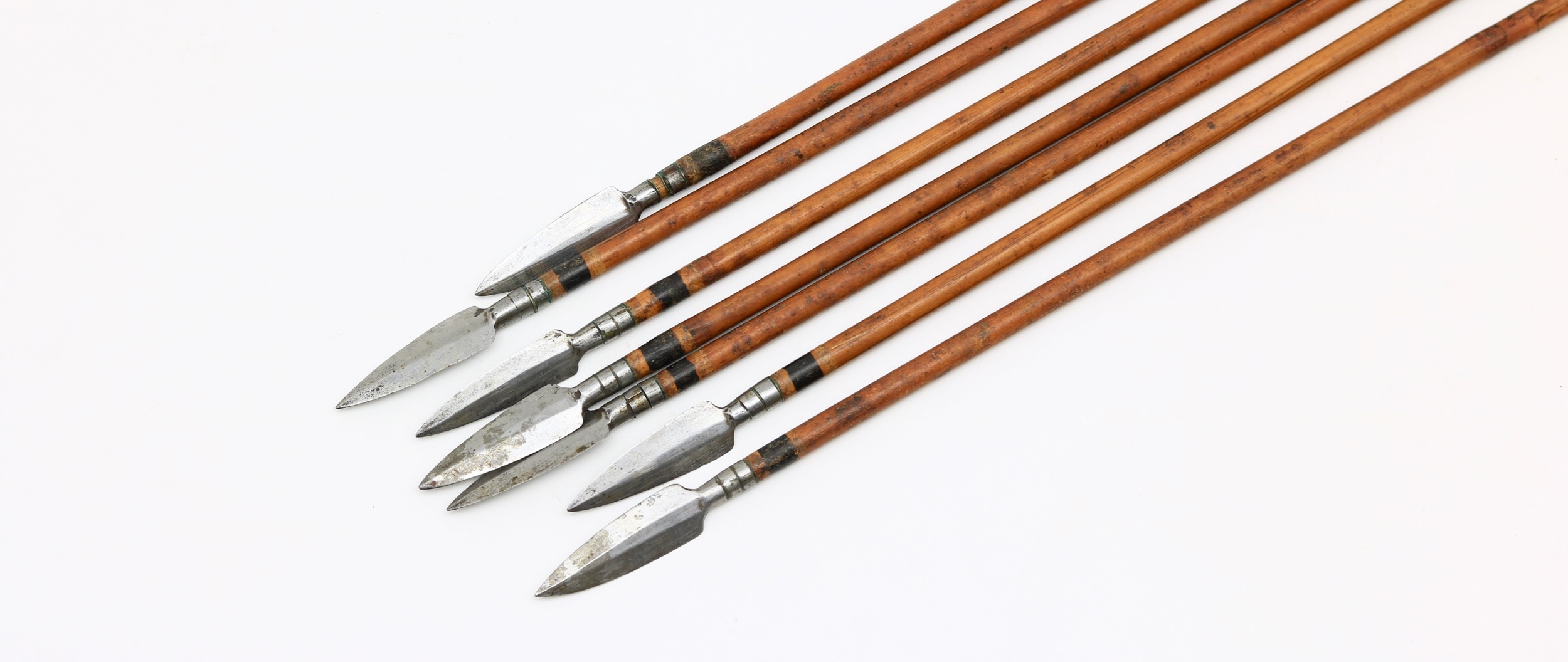
Peculiar shield with catching hook, used by the Santali people of Bengal.
Fine Indian kard with gilt copper alloy hilt, decorated with chiseled flowers.

